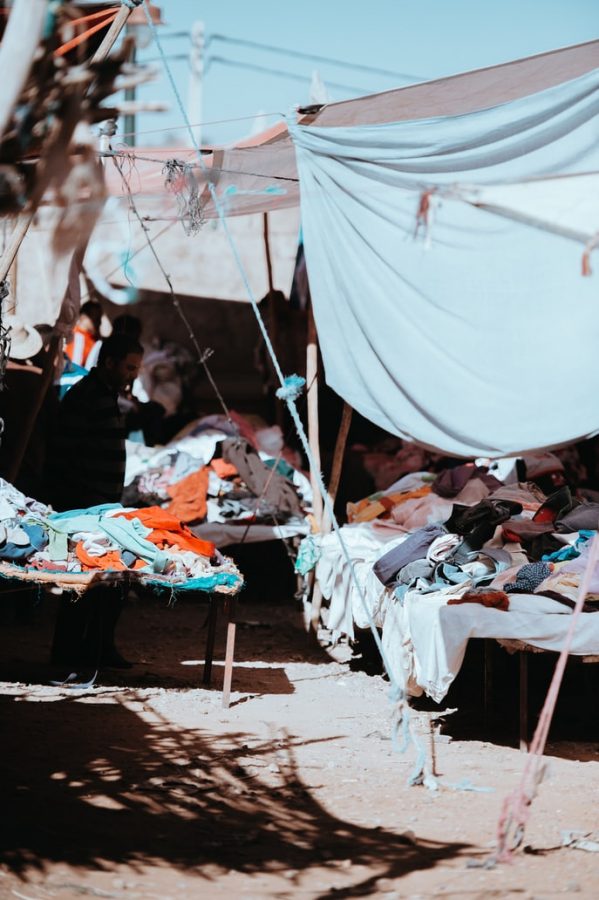Fast fashion is quickly harming the environment
Fast fashion companies like SHEIN, H&M and Forever 21 are all the rage with college students – and they are harming the environment. Photo courtesy of Unsplash.
Sep 25, 2021
You may have heard the stereotype that college students are “ballin ‘on a budget.” This phrase reflects the idea that students in college are doing their best to be smart about spending and save the limited money that they have while simultaneously enjoying luxuries.
Students like Selena Alamir ‘24 and Lauren Brumit ‘24 want to stay up to date on current fashion trends without breaking the bank. Some consumers have fallen into the fast fashion trap. The desire to stay up to date with current fashion trends not only affects student life but has caused environmental concerns due to the source of these trendy outfits: the toxic fast fashion industry.
Fast fashion is the phenomenon where inexpensive clothing is produced rapidly by mass-market retailers in response to the latest trends. Fast fashion retailers include well-known stores such as Zara, Forever21 and H&M as well as rising online brands such as Romwe, Shein and Zaful.
The increased production and purchasing of clothing from these sources has taken a toll on the environment. According to Earth.org, the fast fashion industry has become a major source of waste and pollution; it also uses massive amounts of water and energy.
First, these products are made from very low-quality materials; consumers tend to buy clothes for a low price and dispose of them soon after use. This is a problem because brands in the fast fashion industry use synthetic fibers like polyester, nylon and acrylic which take hundreds of years to biodegrade. This has led to an increase in waste and microplastics in the environment. Similarly, producing textiles is labeled as an “energy-intensive process,” because these companies require large amounts of petroleum which releases acids like hydrogen chloride and harmful particulate matter into the air.
The production of this clothing depends on non-renewable resources and results in high emissions of greenhouse gases; this increases air pollution and limits resources. The fast fashion industry requires a large amount of water. The Earth.org article explains that, “the fashion industry is the second-largest consumer of water, requiring about 700 gallons to produce one cotton shirt and 2000 gallons of water to produce a pair of jeans.” The excessive amount of materials and resources used has become a huge issue for our environment.
Many students understand the detrimental effect fast fashion has on the environment but are also faced with the challenge of being unwilling to spend so much money on clothing. John Carroll’s president of the Environmental Issues Club, Caitlin Kenney ‘22 discusses this question… In an interview with the Carroll News, Kenney explains how ingrained fast fashion has become in our minds; we see a sign that says clothes are on sale and immediately justify purchasing them. She urges students to truly consider how necessary a purchase is and ask themselves, “Will I wear this often? Frequently in the next six months? Frequently in the next year? She also highlights various options for students wanting to purchase less expensive clothing: shopping at thrift stores, visiting resale stores or websites, or buying from friends are all excellent solutions.
Kenney reminds us that shopping second-hand, “is a much better option for the planet and our own wallets.”












